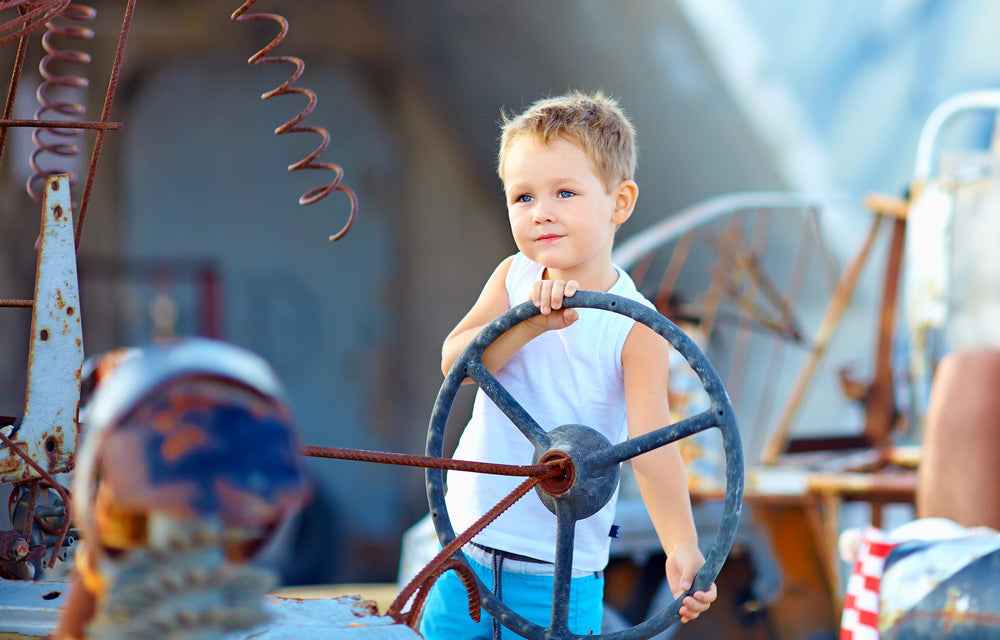Creating Fantasy Worlds: A Strong Predictor of Adult Creativity


As we look at our children playing happily on the floor, we often wonder what kind of adults they will turn out to be. Early signs of athleticism, or specific skills such as strong drawing ability can give us obvious hints, but for those children who are destined to make their marks on the world in an intellectual way, the signs are less apparent.
Michele Root-Bernstein, a scholar who specializes in examining the roots of creativity, has spent years examining a fascinating theory: that children who create elaborate pretend worlds will grow up to contribute significantly to the world in unusually creative ways. Perhaps these contributions will be ground-breaking literary masterpieces, or innovative technological advances, or pioneering reorganizations of traditional social conventions. Regardless of the setting, Root-Bernstein proposes that the level of creative success can be predicted by this innocuous childhood activity.
In the world of scientific analysis, a pretend world is known as a “paracosm,” and the process of playing inside it is known as “worldplay.” Root-Bernstein has contributed an entire chapter about her theory to the book, “The International Handbook on Giftedness,” where she outlines all of the previous studies that underscore her hypothesis, and describes the finer points of the noteworthy paracosm.
Pretend play begins around age two, typically with dolls and figures at its core. About 1 in 30 children will continue to develop this activity into an extremely elaborate world of their own design. Not simply a few Lego buildings for their Superman figure to leap or hunt villains among, but a completely new world shaped from their imagination, with its own maps and territories, social rules and activities, and perhaps even language. Over the course of months or years, they will return again and again to this world, playing inside it, and continuing to add to it in a very focused and determined way. Root-Bernstein describes the characteristics of worldplay as including “imaginative absorption, free-choice learning, and passionate persistence.”
Historically, a number of well-known creative adults report having spent much of their childhoods designing and playing within their own unique pretend worlds, most notably, the Brontë sisters. Charlotte, Emily, Anne and their brother Bronwell created “Great Glass Town,” the capital of “Verdopolis,” an imaginary African country. Beginning with toy soldiers whose military campaigns the siblings controlled, the pretend world expanded and flourished into a completely realized civilization, with hundreds of imaginary citizens (with storylines), landscapes (with illustrations), and accessories (including magazines the children produced).
Various other prominent authors also report having created similarly complex worlds, including Robert Louis Stevenson, C.S. Lewis, and Gertrude Stein; however, literary accomplishment is not the only product of this particular type of childhood creativity. Actor Peter Ustinov, philosopher Friedrich Nietzsche, and composer Wolfgang Amadeus Mozart all left evidence of childhood worldplay.
Robert Silvey, a less well-known name, but no less important historically, created an elaborate paracosm in his childhood complete with maps, newspapers, a history, a constitution, almanacs and financial tables. He grew up to create a brand new field, audience research, for the BBC, combining statistics, sociology and psychology. In recognition of his success in his career, he was awarded an OBE (Officer of the Order of the British Empire) in 1960. His story illustrates how remarkable creativity can translate not only to artistic pursuits, but statistical or scientific activities as well.
According to Root-Bernstein, childhood worldplay is also a significant indicator of intellectual giftedness. Reportedly, one in four gifted children spend time creating paracosms, which is “more than twice the maximal rate projected for the population at large.” Scientists who study the phenomena characterize worldplay as a “learning laboratory” where children can immerse themselves in “self-taught creative behaviors.”
While children who engage in worldplay may seem to be anti-social, or aloof from other children, research suggests that it is not advisable for parents to try to introduce other children to the play, or to join in themselves. It is important for the creative child to have time to work alone, or even in secret if they so desire. This time alone is key to their development of independence. Social skills can be learned at other times!
For more information about Michele Root-Bernstein’s work, her chapter has been reproduced by Psychology Today HERE.
Recent Articles
-
Playful Primer 10 Must-Have Toys for Your Next Backyard BBQ
Summer is just around the corner and we're ready for it! From backyard BBQs to neighborhood park outings, we've discovered...
read more -
Playful Primer Tips & Toys to Support Group Play Experiences
Catching a glimpse of children happily engaged in pretend play is like witnessing pure magic. Ever wonder how closely you...
read more -
Playful Primer 5 Ways to Strengthen the Bond Between Siblings
“I’ll take care of the bike. You take care of each other.” This is what I said to my children...
read more
